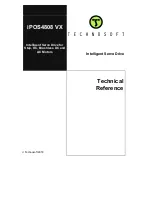
NORDAC SK 750E Manual
148
Technical design subject to change
BU 0750 GB
10.4 Electromagnetic compatibility (EMC)
Since January 1996 all electrical self-contained devices which can be used on their own and are marked as in-
dividual units intended to be operated by final users, are required to satisfy the EEC/89/336 directive. Manufac-
turers may adopt any of the three methods described below to prove conformity with the said directive:
1. EC conformity declaration
This is a statement by which the manufacturer declares that the requirements of the European standards which are
applicable to the electrical environment of the device are met. The manufacturer is not allowed to refer to any stan-
dards other than those published in the official gazette of the European Community in his declaration.
2. Technical document
A technical documentation can be prepared describing the EMC properties of the device. This document must be li-
censed by a "Competent Authority" appointed by the European government agency having jurisdiction in this domain. If
this procedure is adopted it is possible to use standards which are as yet in a stage of preparation.
3.
EC type acceptance test certificate
This method is available for radio transmitting apparatus only.
The performance of SK 750E frequency inverters is not autonomous in the sense of the directive quoted above. As a
matter of fact operation of these devices is dependent on their being connected to other units (e.g. to a motor). Hence
the basic units cannot be provided with the CE marking which would certify conformity with the EMC directive. That is
why the EMC properties of these products are described in greater detail below, while assuming that the devices are
installed in accordance with the instructions and recommendations mentioned in the present documentation.
Allocated to class A, group 2: for industrial environment in general
Devices for use in
secondary (industrial) environment
and
not being generally available
. EMC to be in accordance with
the EN 61800-3 standard for power drives.
Allocated to class A, group 1: interference-suppressed, for industrial environment
This class of operation implies that the manufacturer is allowed to certify himself that the EMC of his devices when these
are installed in power drives meets the requirements of the European directive stipulated for indsutrial environments. The
limit values are in accordance with the basic standards EN 50081-2 and EN 50082-2 for interference emission and immu-
nity in industrial environments.
Allocated to class B, group 1: interference-suppressed, for residential areas, business and light indus-
try environments
This class of operation implies that the manufacturer is allowed to certify himself that his products will satisfy the require-
ments of the EMC directive for residential, business and light industry requirements in terms of electromagnetic compatibil-
ity when incorporated in power drives. The limit values meet the basic standards EN 50081-1 and EN 50082-1 for interfer-
ence emission and immunity.
IMPORTANT
The NORDAC SK 750E frequency inverters are intended
for industrial uses exclusively
. They are not
subject therefore to Standard EN 61000-3-2 for emitting harmonics.
10.5 Classes of EMC limit values
IMPORTANT
Please keep in mind that the inverters cannot be guaranteed to remain within the limit value classes indi-
cated above unless the standard switching frequency (
4/6kHz
) is used, and unless the length of the
(shielded) motor cable is within the above mentioned limits for cable length. Moreover it is absolutley
necessary that the wiring meets the EMC standards as well (cable clamp screws).
The shield of the motor cable has to be connected at both ends (to the shield supporting bar on the in-
verter and to the metal terminal box on the motor). For class 3 requirements to be met it must additionally
be connected to the point where the cable enters the inverter housing (clamp screws to meet EMC stan-
dards).






































